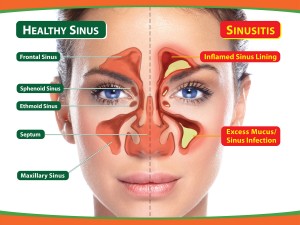The efficacy of macrolide therapy in patients with asthma may not be based exclusively on their antiinflammatory effects. Atypical intracellular pathogens (Chlamydia pneumoniae and Mycoplasma pneumoniae) may play a role in the pathogenesis of reactive airway diseases, and macrolides possess antimicrobial activity against these pathogens. In one study, M pneumoniae or C pneumoniae was present in the airways (detected by polymerase chain reaction [PCR]) in more than half of stable patients with chronic asthma. Thus, it is difficult to distinguish between the anti-inflammatory and antimicrobial effects of macrolides compared with the beneficial responses in some patients with asthma. 
www.acanadianhealthcaremall.com – cheap and safe Canadian pharmacy. We recommend visit this pharmacy and order medications for treatment diseases (sexual health, asthma or other), if you want to.
Table 1—Effect of Clarithromycin in Asthma
| Pretreatment | Posttreatment | p Value | |
| FEVj | 1.6 ± 0.58 | 1.85 ± 0.76 | 0.07 |
| FVC | 2.7 ± 0.9L | 3.0 ± 1L | 0.0038 |
| Chest discomfort | 0.7 ± 0.8 | 0.5 ± 0.7 | 0.02 |
| Nighttime SOB | 3.20 ± 2.15 | 2.51 ± 2.16 | 0.051 |
| Social concerns | 3.6 ± 2.6 | 3.0 ± 2.6 | 0.048 |
Values given as mean ± SD, unless otherwise indicated. SOB = shortness of breath. Table used with permission of Gotfried.
Macrolide therapy improves lung function in patients with asthma associated with the presence of atypical pathogens. Hahn and Golubjatnikov treated 46 asthmatic patients with doxycycline (Vi-bramycin; Pfizer Pharmaceuticals; New York, NY), 100 mg twice daily, azithromycin, 1 g once weekly, or erythromycin, 1 g daily for a median of 4 weeks. The mean FEV1 (67.8% of predicted at baseline) increased by 12.5% after treatment (p = 0.003). Subsequently, Kraft and associates conducted a double-blind study in which 52 stable patients with chronic asthma were randomized to therapy with clarithromycin, 500 mg, or placebo twice daily for 6 weeks. Macrolide therapy resulted in significantly increased mean (± SD) FEV1 levels in asthmatic patients who were PCR-positive for Chlamydia or Mycoplasma (baseline, 2.50 ± 0.16 L; posttreatment, 2.69 ± 0.19 L; p = 0.05). In contrast, there was no improvement in FEV1 in patients who were PCR-negative (baseline, 2.59 ± 0.24 L; posttreatment, 2.54 ± 0.18 L; p = 0.85). A statistically significant reduction in inflammatory mediators (ie, IL-5, IL-12, and TNF-a), and in eosinophil and neutrophil levels in bronchoalveolar lavage fluid also was observed with clarithromycin, suggesting immunomodulatory activity.
Black randomized 232 asthmatic patients who were antibody-positive for C pneumoniae to roxithromycin, 150 mg, or placebo twice daily. After 6 weeks of therapy, patients treated with the macro-lide had significantly increased nighttime peak expiratory flow (increase from baseline: roxithromycin, 15 L/min; placebo, 3 L/min; p = 0.02), but a nonsignificant change in the daytime peak expiratory flow (increase from baseline: roxithromycin, 14 L/min; placebo, 8 L/min).